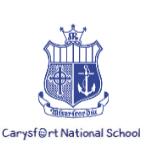
What are head lice?
Head lice are grey-brown tiny wingless insects about the size of a pinhead when they hatch and 3mm long (the size of a sesame seed) when fully grown. They are spread by head-to-head contact and cannot fly, jump or swim. Children are most commonly affected by head lice as they tend to have more head-to-head contact while at school or during play.
How do I detect them?
Head lice often cause the scalp to itch actually caused by an allergy to the lice. In some cases of head lice, a rash may appear on the back of the neck. This is caused by a reaction to louse droppings. It is very difficult to identify head lice by inspecting the head. Detection combing involves using a special fine-toothed head lice comb that you can buy from your local pharmacy. If you discover head lice in your child’s hair, check the rest of your family, and alert your child’s school and treat immediately.
How can I treat my child?
Treatment should only be carried out after live head lice have been found. You can treat the lice at home by using a head lice comb or medicated lotions. However, neither treatment method will protect against re-infestation if head-to-head contact is made with someone with head lice during the treatment period.
How can I prevent head lice?
A head lice infestation cannot be easily prevented. Keeping long hair tied back/plaited and avoiding sharing of hats, hair brushes etc. can help. Regular detection combing – for example, on a weekly basis, is the best way to find new lice quickly.
School closed on Monday 6th and Tuesday 7th May 2024
School closed 7th May 2024



Registered Charity No: CHY1566
© 2020 Carysfort National School, All rights reserved. Website by Michelle McGuire
| Cookie | Duration | Description |
|---|---|---|
| cookielawinfo-checkbox-analytics | 11 months | This cookie is set by GDPR Cookie Consent plugin. The cookie is used to store the user consent for the cookies in the category "Analytics". |
| cookielawinfo-checkbox-functional | 11 months | The cookie is set by GDPR cookie consent to record the user consent for the cookies in the category "Functional". |
| cookielawinfo-checkbox-necessary | 11 months | This cookie is set by GDPR Cookie Consent plugin. The cookies is used to store the user consent for the cookies in the category "Necessary". |
| cookielawinfo-checkbox-others | 11 months | This cookie is set by GDPR Cookie Consent plugin. The cookie is used to store the user consent for the cookies in the category "Other. |
| cookielawinfo-checkbox-performance | 11 months | This cookie is set by GDPR Cookie Consent plugin. The cookie is used to store the user consent for the cookies in the category "Performance". |
| cookielawinfo-checkbox-performance | 11 months | This cookie is set by GDPR Cookie Consent plugin. The cookie is used to store the user consent for the cookies in the category "Performance". |
| viewed_cookie_policy | 11 months | The cookie is set by the GDPR Cookie Consent plugin and is used to store whether or not user has consented to the use of cookies. It does not store any personal data. |
